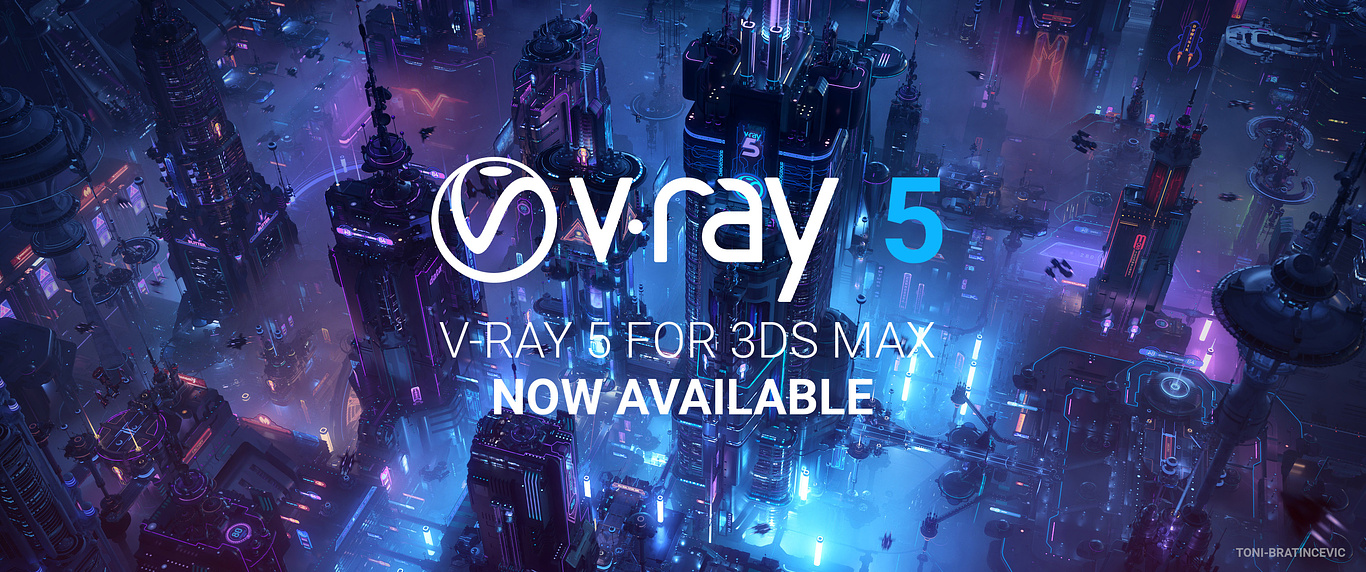
Industry News
Chaos Group Releases V-Ray 5 for 3ds Max
Editor's notes
Like many businesses in 2020, this year has been difficult for CGarchitect as well. Your support would mean a great deal. When you upgrade or purchase your Chaos Group licenses through us, you are not only supporting our efforts to make the visualization community a better place, but also allows us to keep building cool stuff like the new CGarchitect Platform.
https://shop.cgarchitect.com/
Thank you in advance for your support!
https://shop.cgarchitect.com/
Thank you in advance for your support!
Jeff Mottle — Founder at CGarchitect
- LOS ANGELES, Calif. – June 16, 2020 – Today, Chaos Group released V-Ray 5 for 3ds Max, connecting its award-winning renderer to more parts of the visualization process. Artists and designers can now composite renders, enhance materials and interactively relight images without leaving the program, extending V-Ray’s capabilities into new realms.
“The future is all-in-one,” said Phillip Miller, Vice President of Product Management at Chaos Group. “An artist doesn’t want to jump into extra applications – they want tools that excel at every part of the process. V-Ray 5 is a big step in that direction.”
Beyond Rendering
Two of V-Ray 5’s most exciting additions – Layer Compositing and Light Mix – can be found in the new V-Ray Frame Buffer (VFB), which was also redesigned for efficiency and a cleaner look.
Two of V-Ray 5’s most exciting additions – Layer Compositing and Light Mix – can be found in the new V-Ray Frame Buffer (VFB), which was also redesigned for efficiency and a cleaner look.
With Light Mix, artists can interactively explore different lighting scenarios without having to re-render an image. Users can now adjust the color and intensity of any light source right away, ensuring faster iterations when designing looks and moods.
The Layer Compositor offers a faster path to final images, helping users post-process shots in the new VFB without outside applications. Using this non-destructive workflow, artists can adjust different render elements and perform color corrections with ease.
Materials Made Easy
V-Ray 5 adds seven features and improvements tailored to materials, including a new management system and over 500 readymade materials designed to cover most objects and spaces. New built-in presets can help dial-in everyday options like metal, glass and plastic, as well as common hair colors, helping artists achieve photorealism much faster.
With V-Ray 5’s new randomization tools, artists can add slight variations to their materials, increasing believability across a scene. VRayMultiSubTex colors can now be shifted by hue, saturation and gamma, while a new VRayUVWRandomizer map will adjust the offset, rotation and scale of both textures and procedural materials. For repeating texture maps, artists now have Stochastic Texture Tiling, which automatically removes tiling artifacts.
Other New Features in V-Ray 5 Include:
- Coat Layer – Gain extra reflections on surfaces without using blend materials.
- Sheen Layer – Easily simulate fabrics like velvet, satin and silk.
- Photoreal Material Previews – New view incorporates global illumination to provide an exact representation of a rendered material.
- Dirt with Streaks – New controls for aging materials with procedural streaks have been added to the VRayDirtMtl.
- New Car Paint Material – Provides highly realistic flakes with less memory.
- New Sun and Sky System – Improves accuracy when the sun is at the horizon, including the magic hours right before sunrise and after sunset.
- Camera EV Control – Adjust the exposure value of the V-Ray Physical Camera without affecting motion blur or depth of field.
- V-Ray GPU Updates –Initial support for out-of-core geometry allows users to break through memory constraints when necessary. Resumable progressive rendering ensures artists never have to restart from square one.
- Blue Noise Sampling – New algorithm update can make images (and noise) look cleaner through fewer samples.
- V-Ray Scene Updates – Export selected objects, including pivot points, for transforms in Project Lavina.
- ACEScg Color Workflows – Artists can now render in the emerging CG colorspace standard, accessing a wider gamut of colors.
- Light Path Expressions – The behavior of light in a scene can now be used for custom render elements.
- Filmic Tonemapping – HDR images can now mimic the properties of film to give images a cinematic look.
For a full feature tour, please visit the V-Ray 5 for 3ds Max product page. Chaos Group will also be hosting a webinar and live Q&A on June 23. The webinar is completely free and begins at 9 a.m. PST / 7 p.m. EEST. Register now.
Pricing and Availability
V-Ray 5 for 3ds Max is available now for Windows. A full Workstation license is priced at $1,180, with upgrades available for $590. Term licensing is available at $470 (annually) and $80 (monthly). V-Ray 5 for 3ds Max is also included in V-Ray Collection, an annual plan that gives users full access to 15 Chaos Group products and services for $699/year.
You must be logged in to post a comment. Login here.
About this article
Photorealistic Ray Tracer Adds Post-Rendering Compositing and Lighting Tools, Expanding the Industry’s Most Complete Rendering Toolset
visibility1.37 k
favorite_border5
mode_comment0






